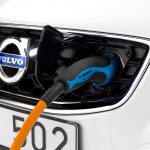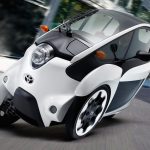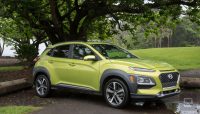The Self-Driving Car Revolution’s Unintended Consequence: Lots Of Puking Passengers
Good thing you won’t need your hands on the wheel, cause you’re going to need a barf bag.
Self-driving cars promise a safe transportation future, where drunk drivers are all but eliminated and accidents are few. But there may be an unintended consequence to our switch away from human-operated vehicles: a lot of vomiting.
According to a report from the University of Michigan’s Transportation Research Institute, 6% to 10% of American adults will get motion sickness—with nausea, dizziness, vomiting, and so on—in fully self-driving cars either most or all of the time. Another 6% to 12% of American adults will get moderate to severe motion sickness in a self-driving vehicle at least some of the time. That’s a fairly high percentage of potentially ill riders.
If you’ve ever been a passenger in a car driving down a windy road, feeling like you’re going to puke while the driver is perfectly fine, this shouldn’t be too surprising. As the study’s authors, Michael Sivak and Brandon Schoettle, explain, motion sickness is usually caused by two factors: a “conflict between visual and vestibular inputs” (like facing the side of the car instead of looking straight ahead) and a lack of ability to anticipate movements or a loss of control of movement. Since drivers have more control over where the vehicle is moving, they get motion sick less often than passengers.
Motion sickness tends to get worse with activities like reading—which is exactly what bored passengers in self-driving cars are likely to do. Some activities are worse than others. While reading, texting, and watching movies can increase severity of motion sickness, sleeping can actually make it better.
In order to calculate the percentage of people who would get motion sick, the researchers relied on a six-country survey that asked people what they would do instead of driving in a self-driving car, as well as another study examining the frequency and severity of motion sickness in adults while doing different activities in a vehicle.

The study provides conservative estimates. The real self-driving car motion sickness percentages may be even higher. The authors write:
The present calculations assumed no negative effect on motion sickness of either watching the road (despite the loss of control over the direction of the movement) or talking on the phone (despite not always being accompanied by watching the road). These are conservative assumptions, suggesting that the actual frequency and severity of motion sickness in self-driving vehicles might be greater than calculated in this report.
This quandary—swapping safety concerns for sickness—can’t be entirely solved, because anyone who isn’t driving a car is by definition lacking control over the vehicle, and that’s one of the primary causes of dizziness and nausea. But the study authors suggest some fixes.
A heads-up transparent display could ensure that visual and sensory inputs aren’t in conflict, as could non-swiveling seats that restrict head motion. Fully reclining seats could also be useful, since they let people sleep, reducing the chance of nausea. Another nausea-reducing method cited by the authors could mimic vehicle motion and force with stimuli imposed around the passenger video screen.
At the very least, there should be a designated place in the car for vomit bags.
[Top Photo: Flickr user JFXie]
Fast Company , Read Full Story
(161)














